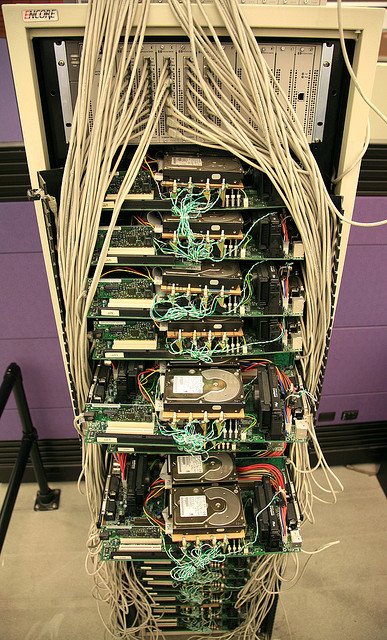RPA as a Solution to Your Legacy Needs

Editor's note: This post was originally published in 2014. For updated information on Robotic Process Automation (RPA) as a solution to legacy systems, check out our 2020 post Why RPA is an Ideal Technology to Integrate Legacy Systems.
Any IT executive can tell you that the mere prospect of replacing an outdated legacy system fills them with dread. Legacy systems, those programs that hold an entire company’s data and without which business cannot go on, are the foundation for business processes. As those systems become more difficult to manage or are unable to meet the changing needs of customers, replacing them becomes a primary concern. However, total replacement is not the only option anymore.
Depending on the scale of a company’s legacy systems, replacing ancient tech with new systems can take years. Then there’s the added pressure to ensure a flawless data migration – no one wants valuable information lost to the ether. To top it all off, employees and customers have to be able to access systems as they normally would during the replacement. One banking executive compared replacing legacy systems to “changing engines on a Boeing 747 while in flight.”
In years past, total replacement could be avoided and costs kept low by outsourcing or offshoring some legacy processes, but this is not always a viable option (for businesses with large numbers of users, for example). Robotic process automation (RPA) as a solution for dealing with legacy systems is gaining in popularity.
RPA could be the answer to your legacy problems, especially if the following are true:

You need a quick solution: If your competitor has come out with a new system feature for users that your legacy software doesn’t support, RPA can fill the gap, either indefinitely or until an in-house solution can be built. Considering that most legacy replacement plans take years, RPA is a much faster solution even without the threat of competition.
You want an in-house solution: Sure, RPA can technically be thought of as outsourcing, but it can all be controlled within your IT department. You remain in full possession of the information in your systems. And unlike an offshoring agreement, you can easily scale the solution up or down according to your need.
You really cannot replace your legacy systems: Many government departments are built on exceptionally old systems from the 1970s and ‘80s which they simply cannot afford to replace. RPA can meet this particular need and open up entirely new possibilities for an organization that is chained to an outdated system.
There are obviously limits to RPA’s effectiveness in revitalizing legacy systems. RPA cannot alter the outdated systems themselves, and it may only serve as a crutch to hobble along for a few more years before replacement becomes inevitable. However, RPA presents a real solution to a growing problem and could be the perfect solution for many.
Is it right for you? Get your complimentary copy of our white paper Identifying the Real Business Value of RPA.

Client Service Representative, Arts People
Get articles from automation experts in your inbox
SubscribeGet articles from automation experts in your inbox
Sign up today and we'll email you the newest articles every week.
Thank you for subscribing!
Thank you for subscribing! Each week, we'll send the best automation blog posts straight to your inbox.



